Haixu Case Study #6 - Microscope - a visual guide
 Anand (RC)
Anand (RC)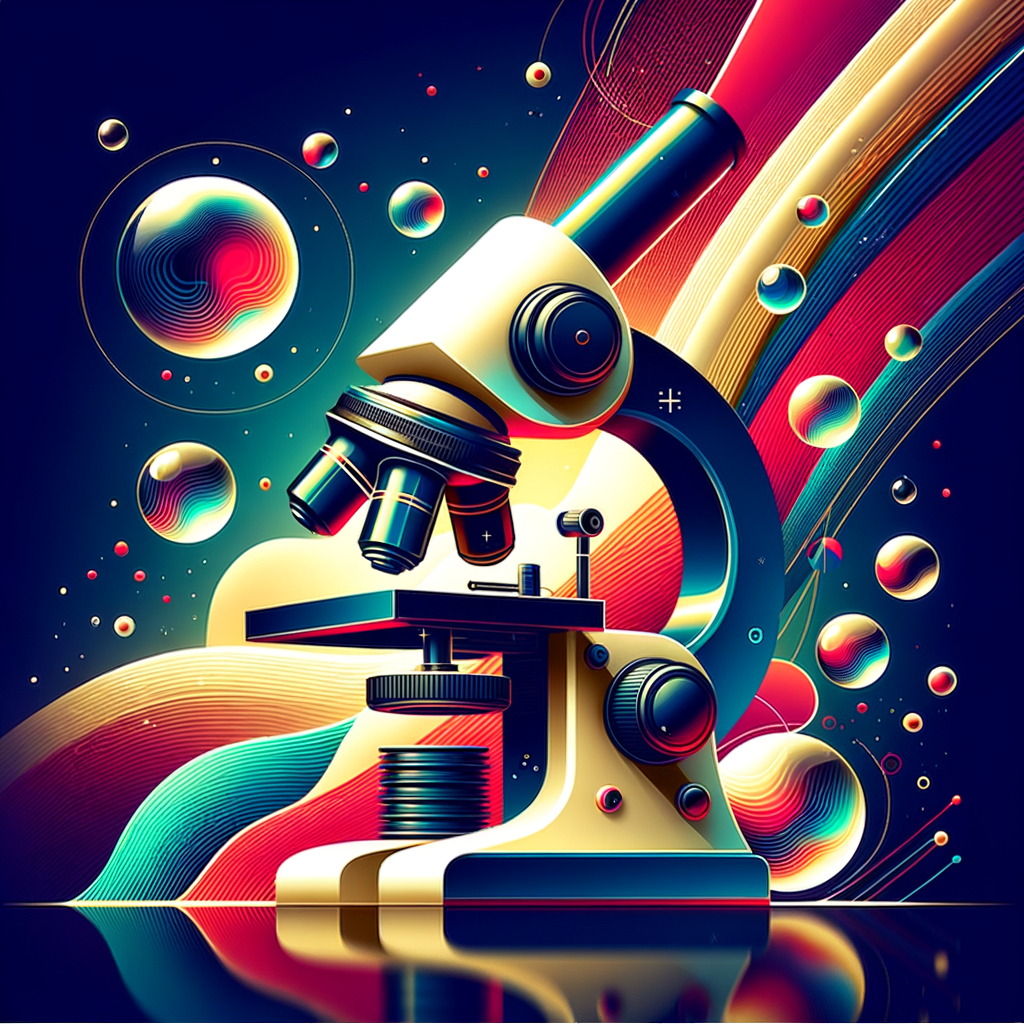
This deep dive case study explores the haixu visual guides on Microscopes, instruments that have revolutionized our understanding of the micro and nano worlds. We'll be examining two versions of the guide: v1 and v2. You can find these guides here.
For broader context on what haixu is, how it works, and what to expect, please refer to the first visual guide case study on Bioluminescence.
Overview
Let's start by looking at the covers and tables of contents for both versions:
Cover of Microscope visual guide v1
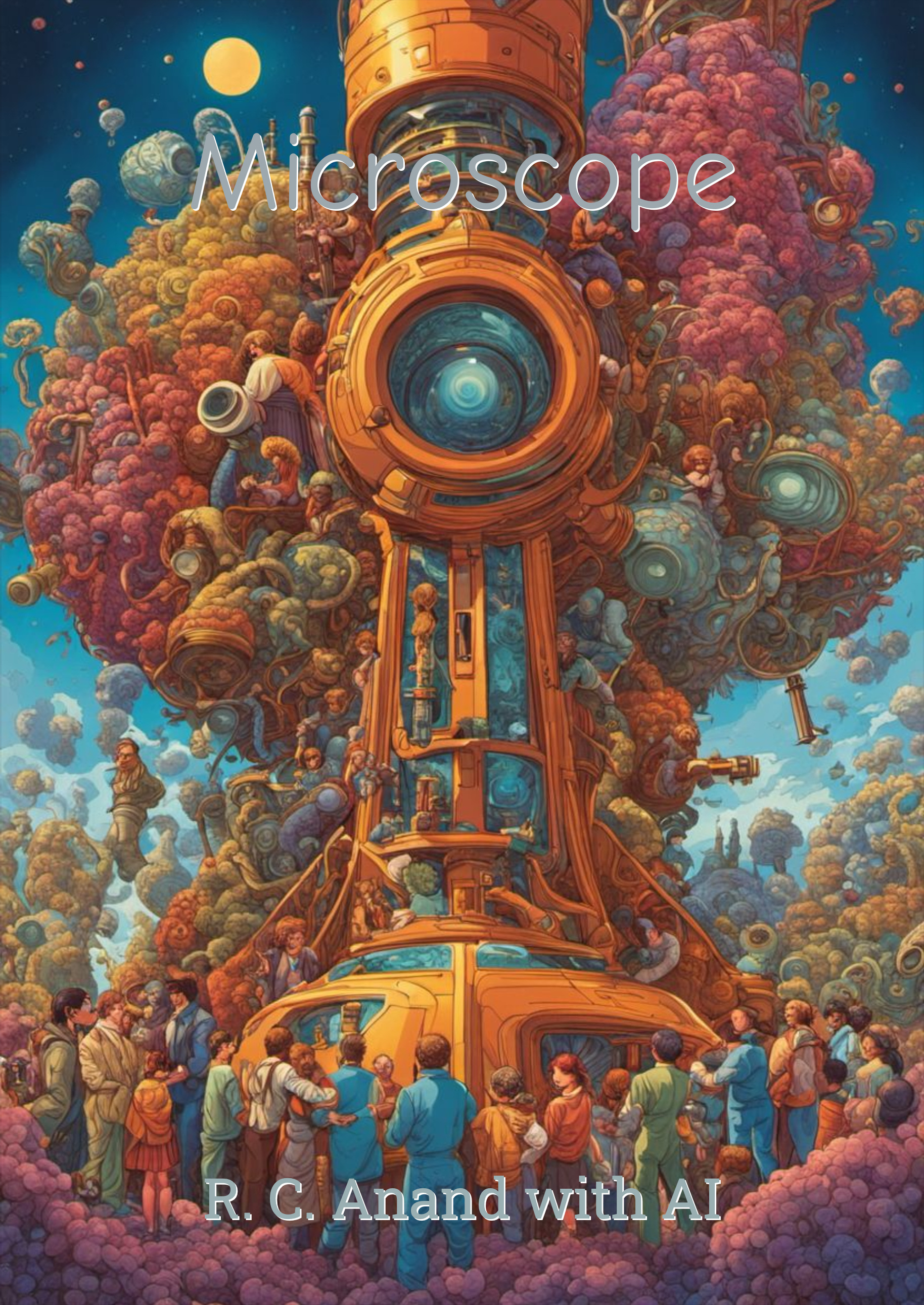
Table of contents for Microscope visual guide v1
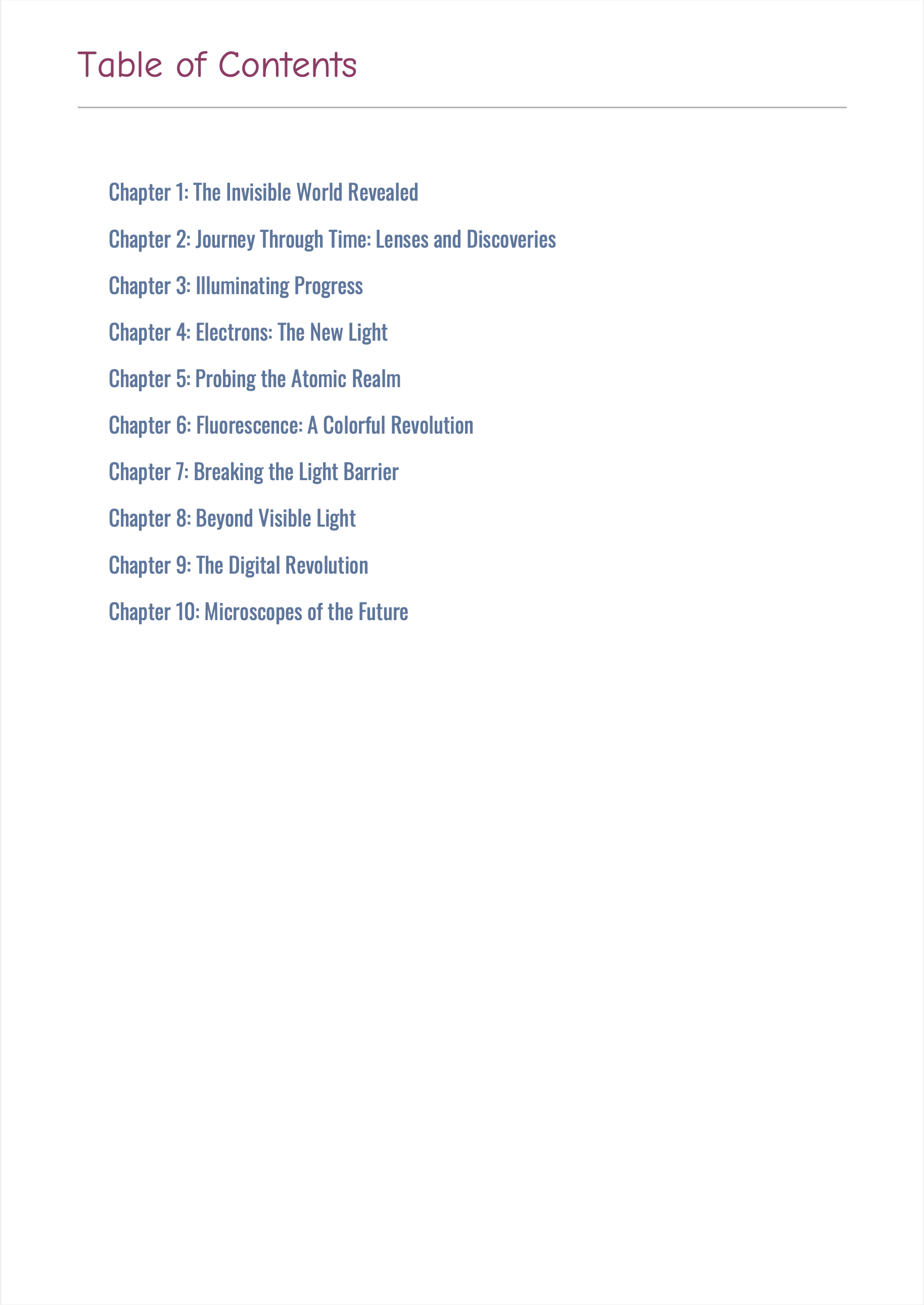
Cover of Microscope visual guide v2
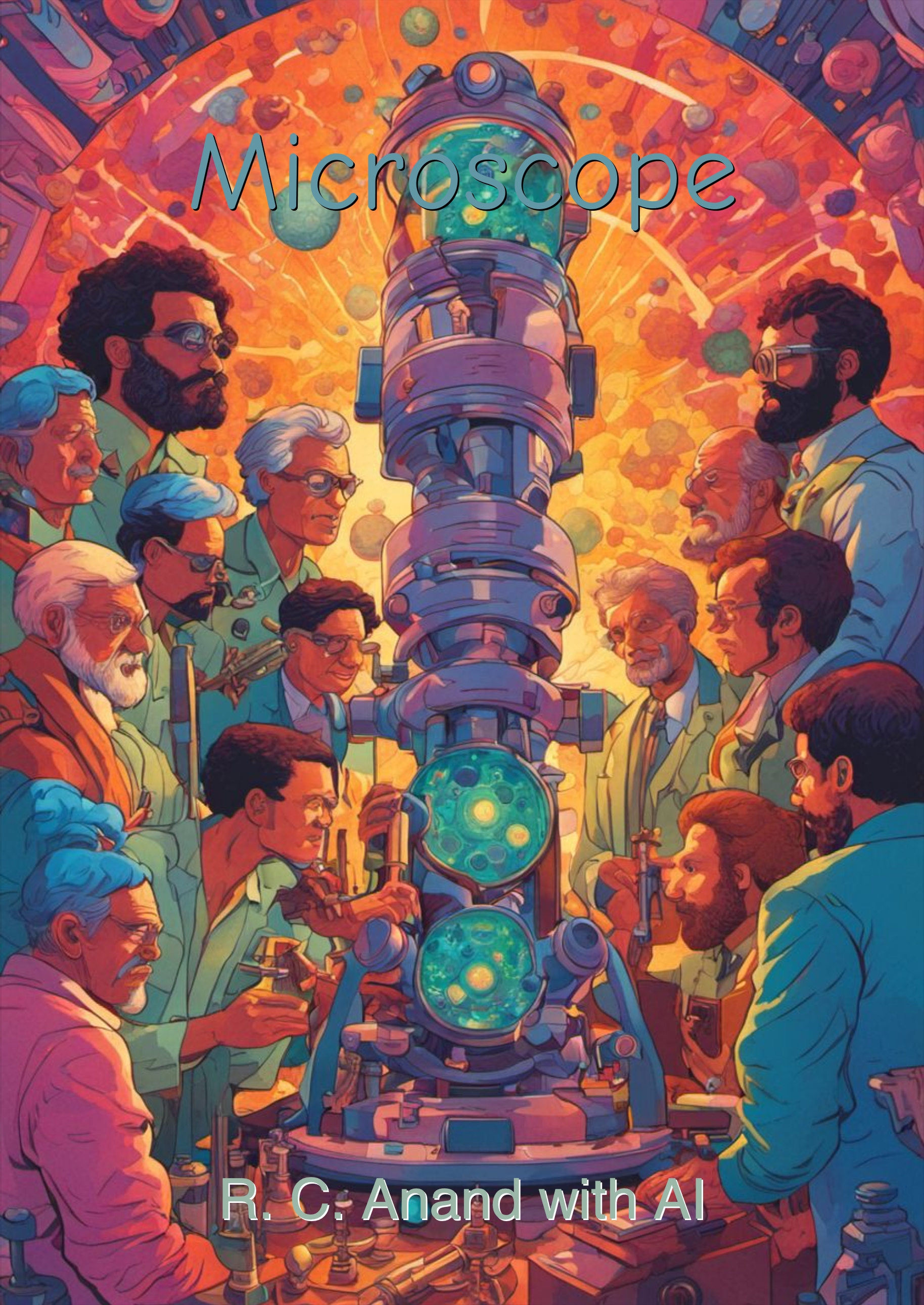
Table of contents for Microscope visual guide v2
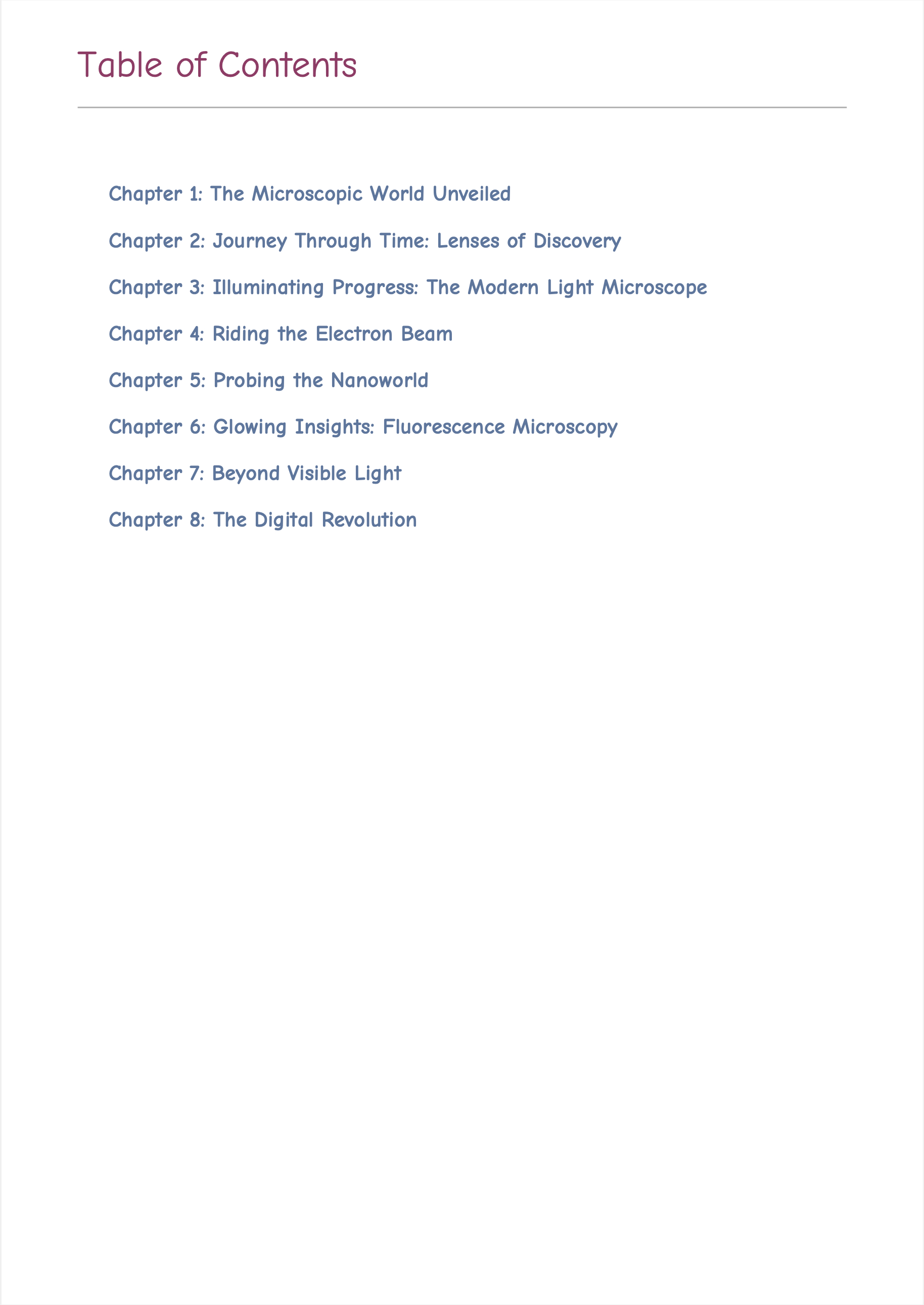
Topic Suitability and Handling
Microscopes are an excellent topic for an AI-generated visual guide:
Historical evolution: The guide can illustrate the development of microscopy over time.
Diverse technologies: From optical to electron microscopes, the topic covers a wide range of scientific instruments.
Scientific impact: Microscopes have been crucial in many scientific discoveries, providing rich material for storytelling.
Visual nature: The topic naturally lends itself to engaging visuals of both the instruments and their microscopic findings.
Content Analysis
1. Introduction to Microscopy
Overview of microscope types (v1, pages 2-3)
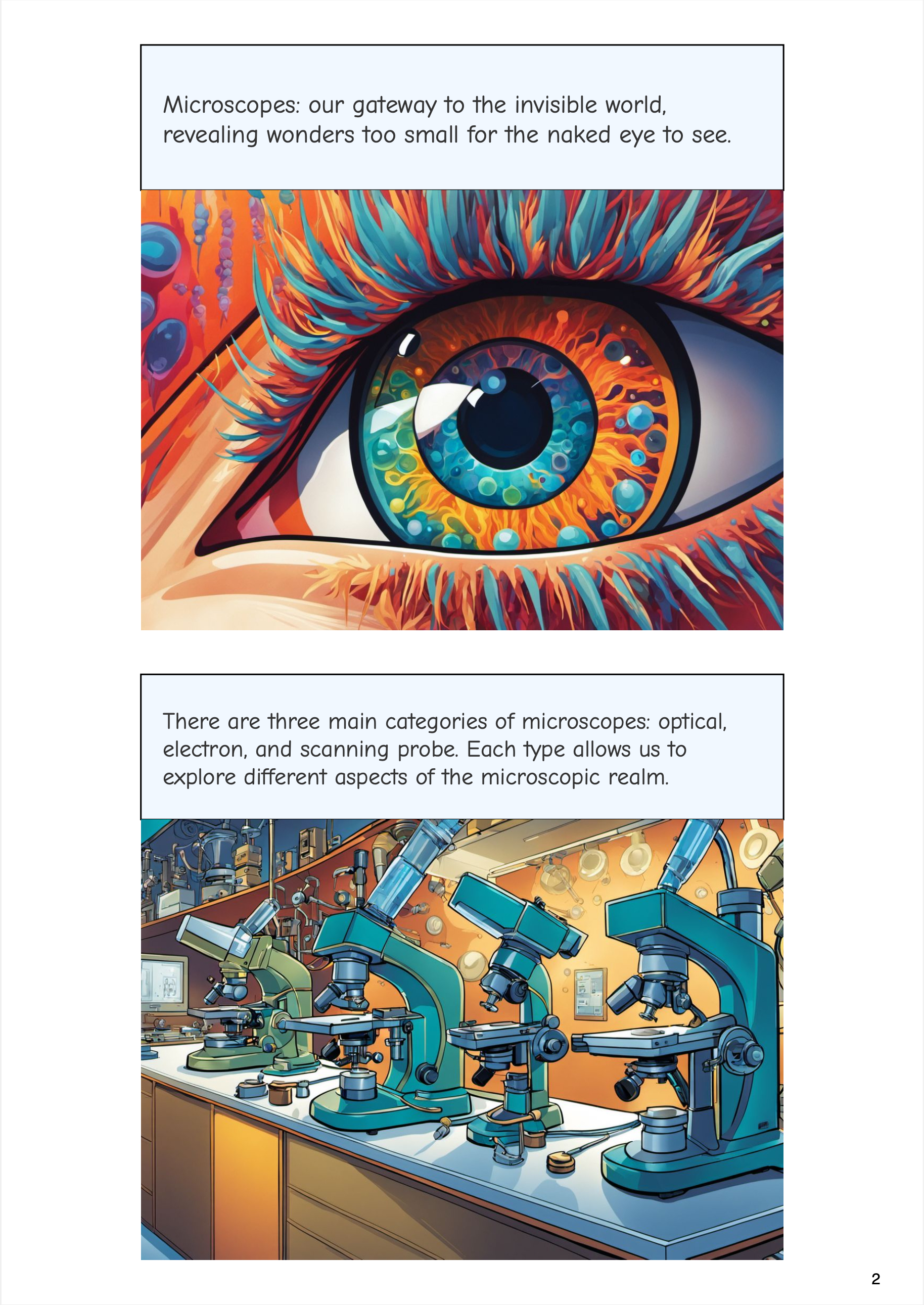
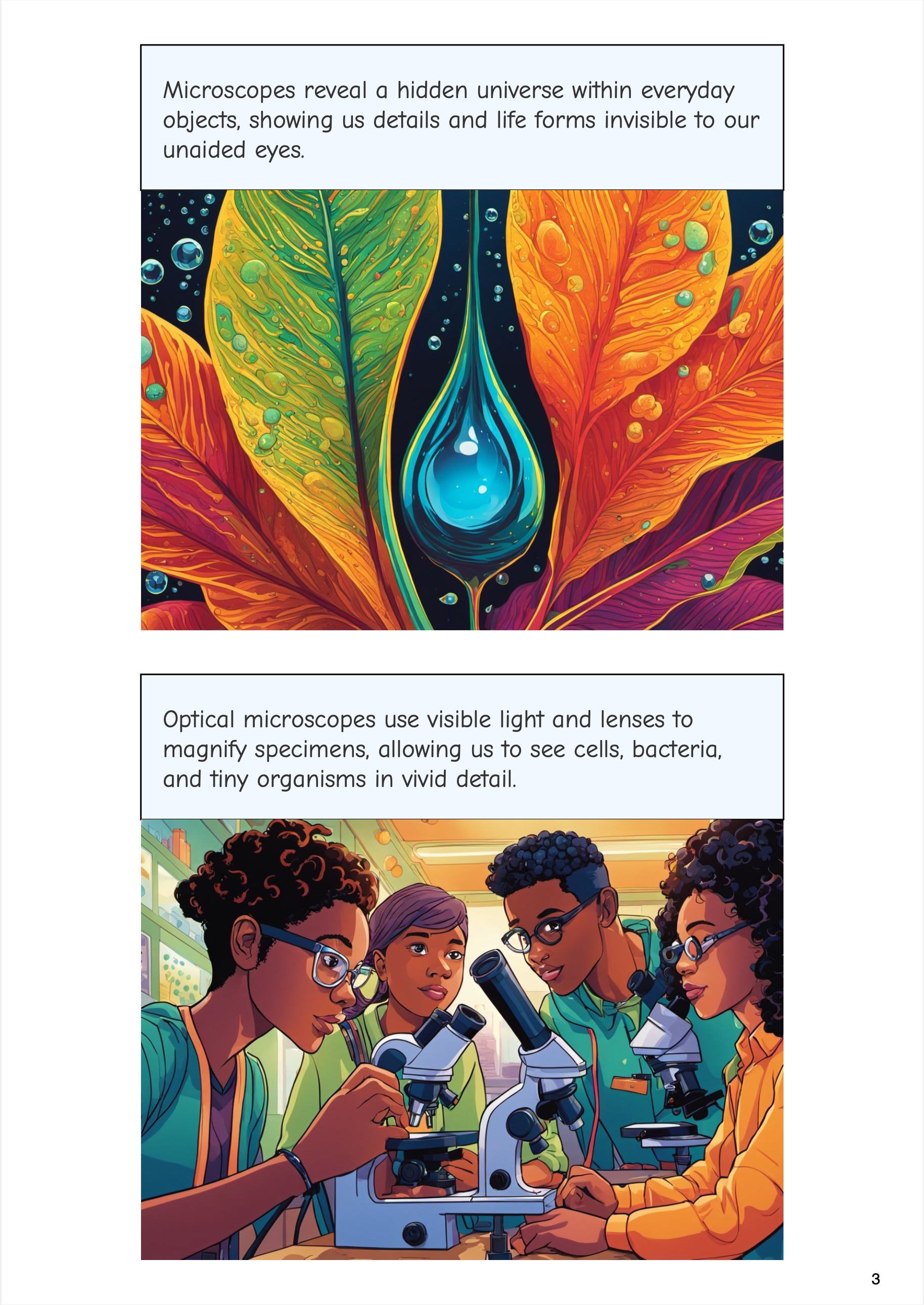
Both versions provide a clear introduction to microscopy, explaining the basic types of microscopes and their capabilities.
Positive Aspect: The guides offer accessible explanations of complex scientific instruments, making them understandable for a general audience.
Who Benefits:
High school and undergraduate students studying biology or physics
Science enthusiasts and hobbyists interested in microscopy
Educators looking for visual aids to explain different types of microscopes
2. Historical Development
Evolution of microscope design (v2, pages 6-7)
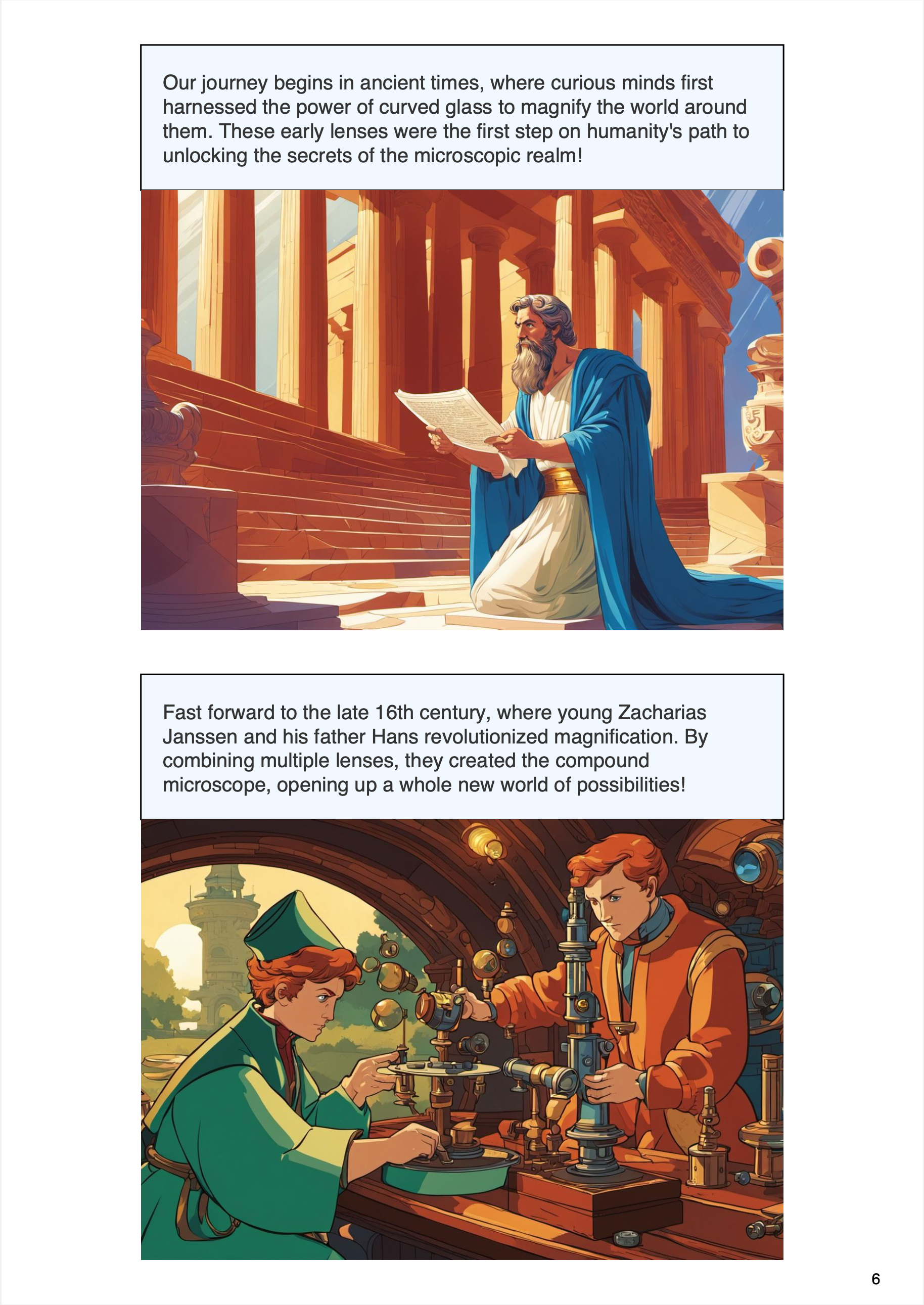
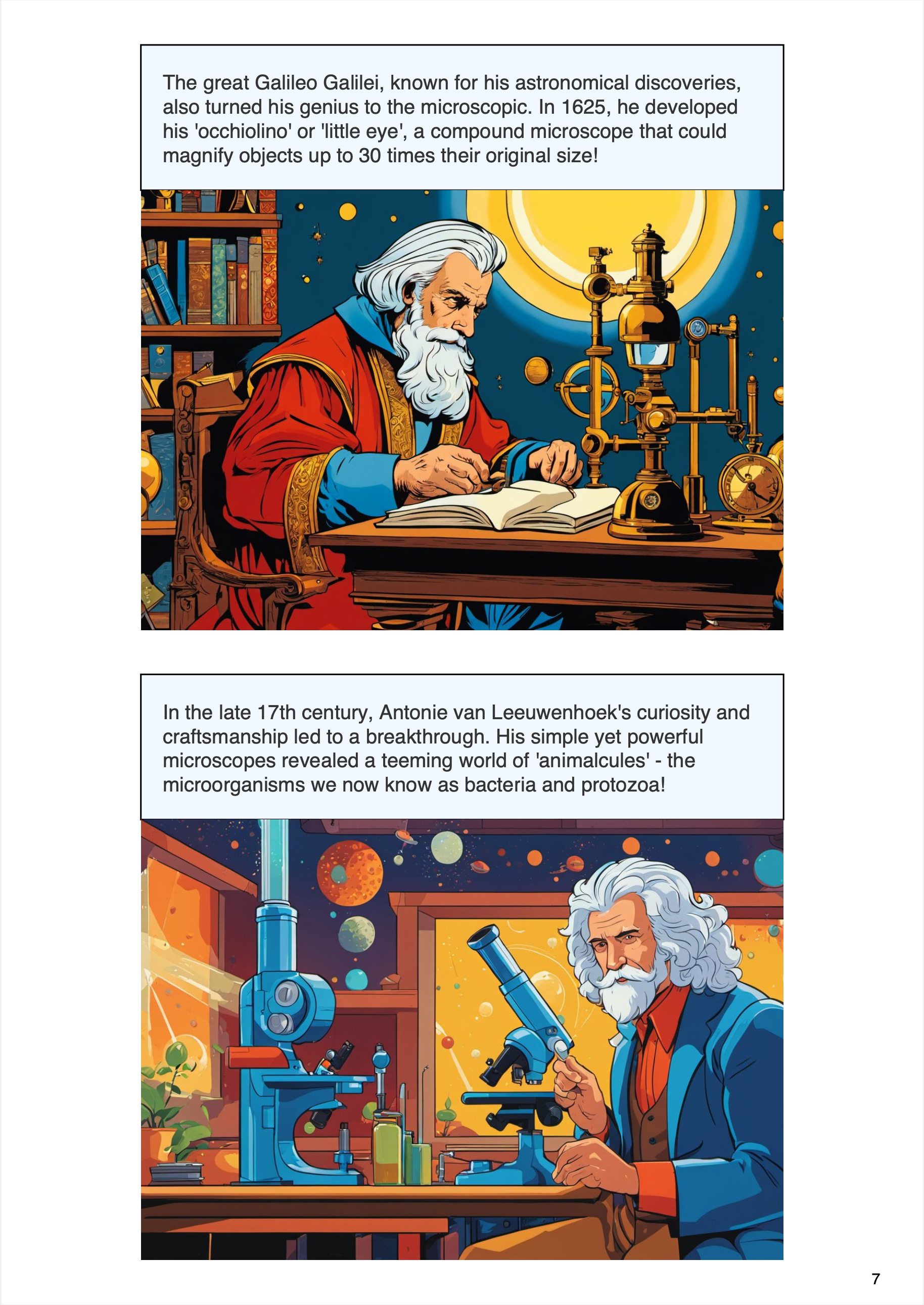
The guides excel at depicting the historical development of microscopes, from early lenses to modern compound microscopes.
Interesting Nuance: The AI-generated images provide unique visualizations of historical instruments, offering fresh perspectives on the evolution of microscopy.
Orientation of objects: Note how the microscope eyepiece is pointed away from the person in the bottom panel image on page 7 - this is another common problem with AI image generators. They do not get relative orientations of elements right - if we were to manually fix this, we need to emphasize the relation between person and microscope to increase the chance of getting the elements to align properly.
Who Benefits:
History of science students and researchers
Museum curators and science communicators
Antique scientific instrument collectors and enthusiasts
3. Modern Microscopy Techniques
Fluorescence microscopy techniques (v1, pages 27-28)
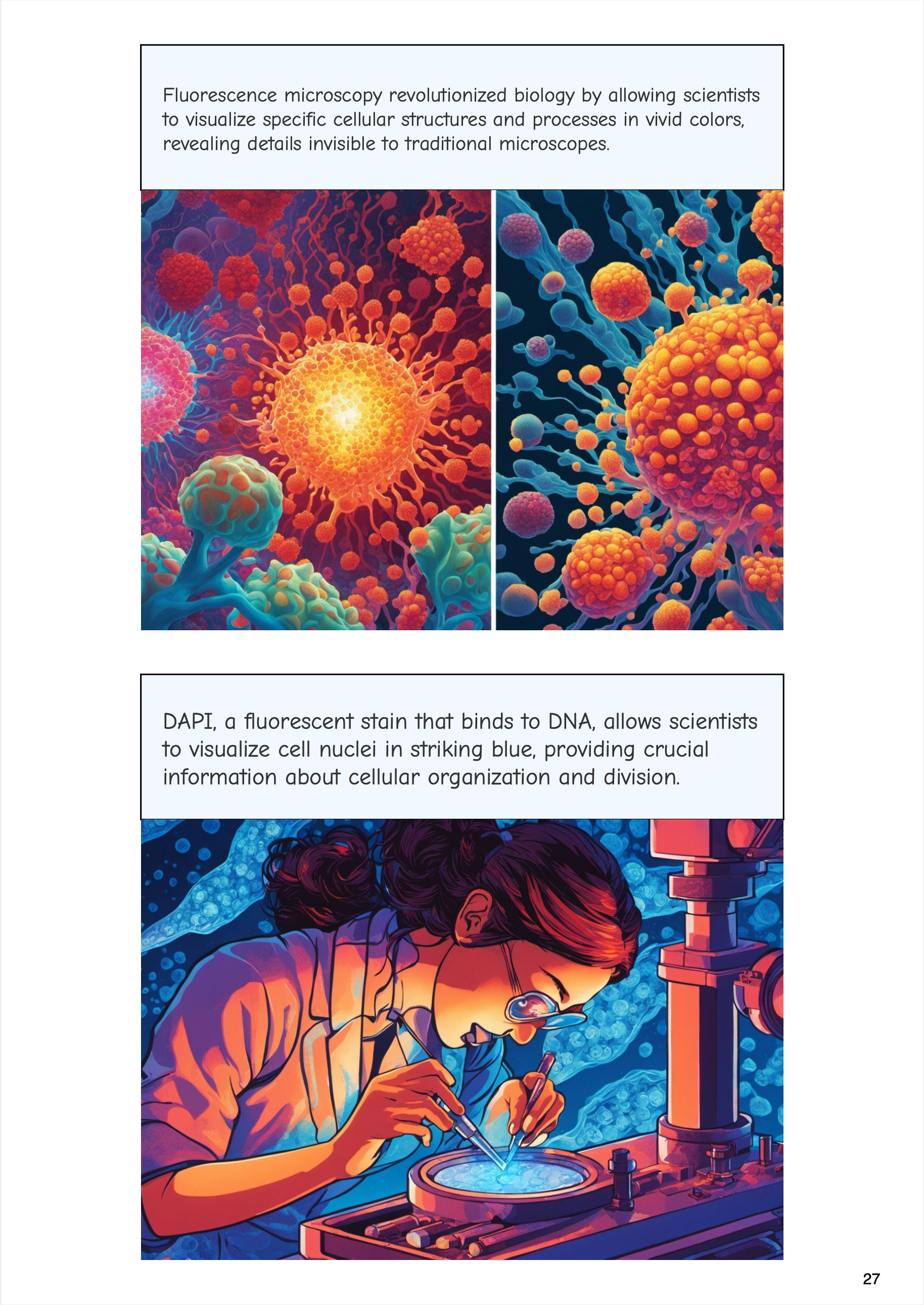
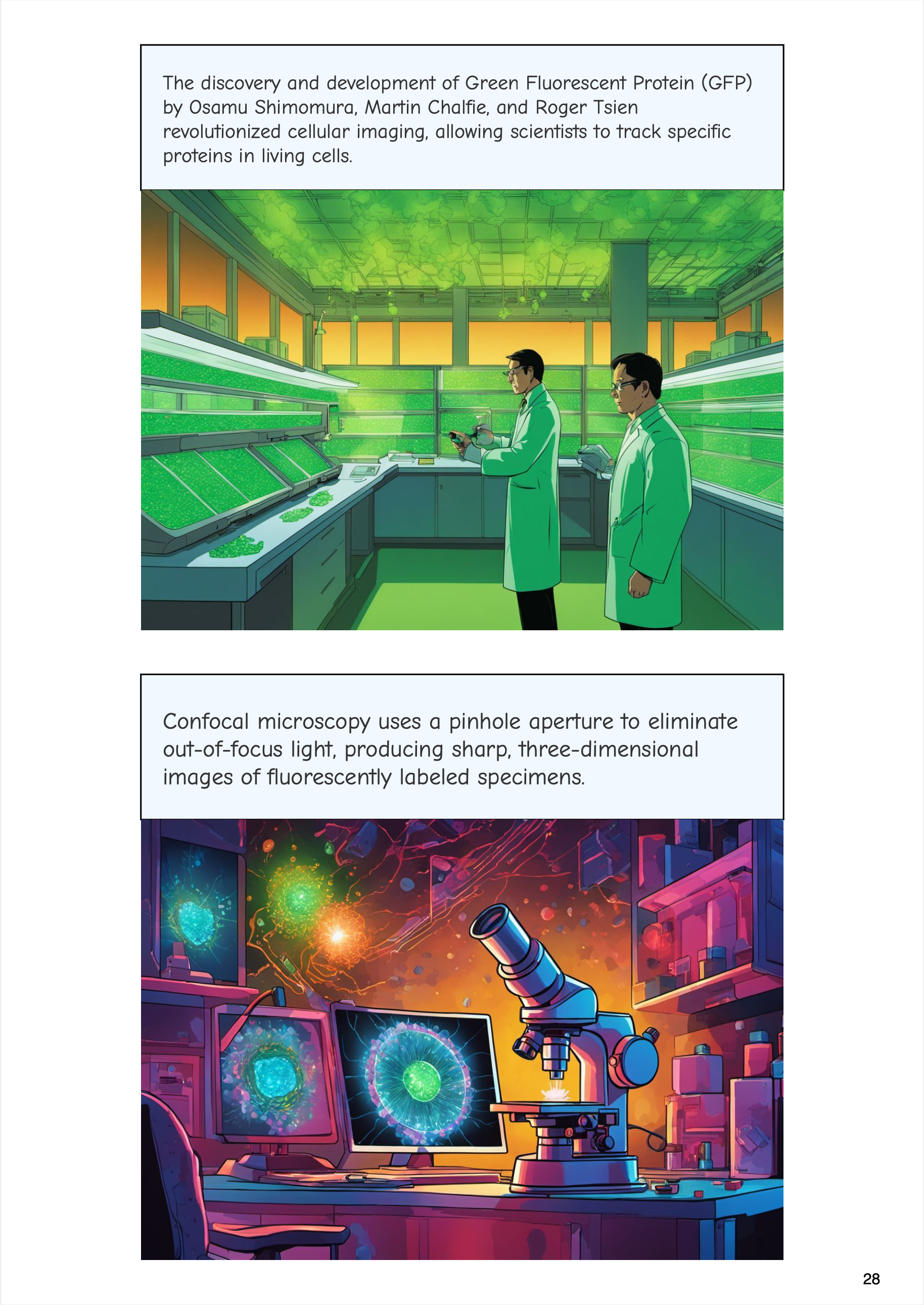
Both guides offer detailed explanations of modern microscopy techniques, including electron microscopy, fluorescence microscopy, and scanning probe microscopy.
Positive Aspect: Complex scientific techniques are broken down into understandable steps, with clear visual representations of each method.
Who Benefits:
Graduate students in biology, chemistry, and materials science
Research scientists using advanced microscopy techniques
Industry professionals in fields like nanotechnology and biotechnology
4. Applications and Impact
Applications of microscopy in various fields (v2, pages 27-28)
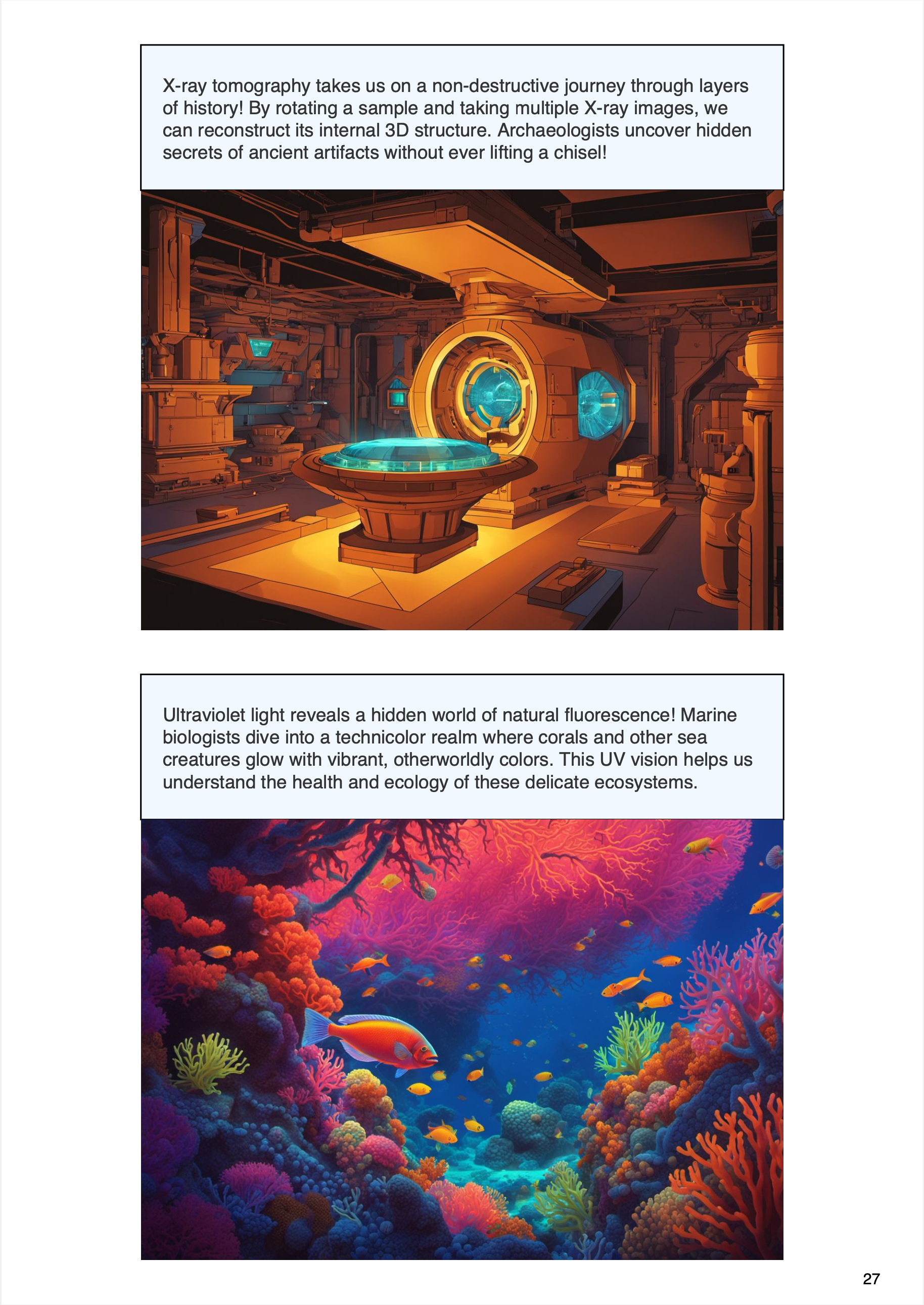
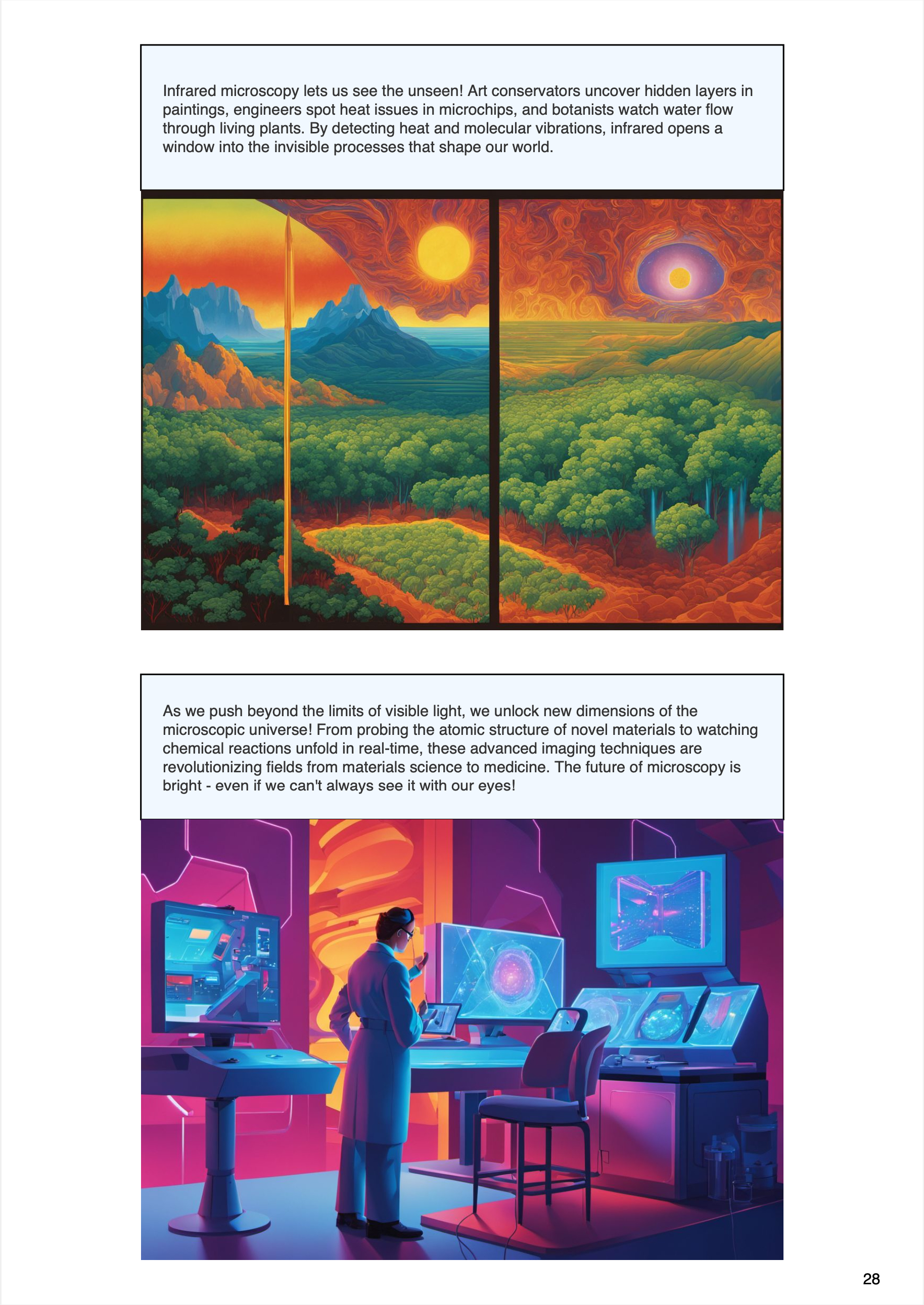
The guides explore the wide-ranging applications and impacts of microscopy across different scientific disciplines.
Interesting Challenge: The AI manages to create compelling visualizations of abstract concepts like the impact of microscopy on various fields of study.
Who Benefits:
Interdisciplinary researchers
Science policy makers and research funders
Science journalists and communicators
5. Future of Microscopy
Future concepts in microscopy (v1, pages 47-48)
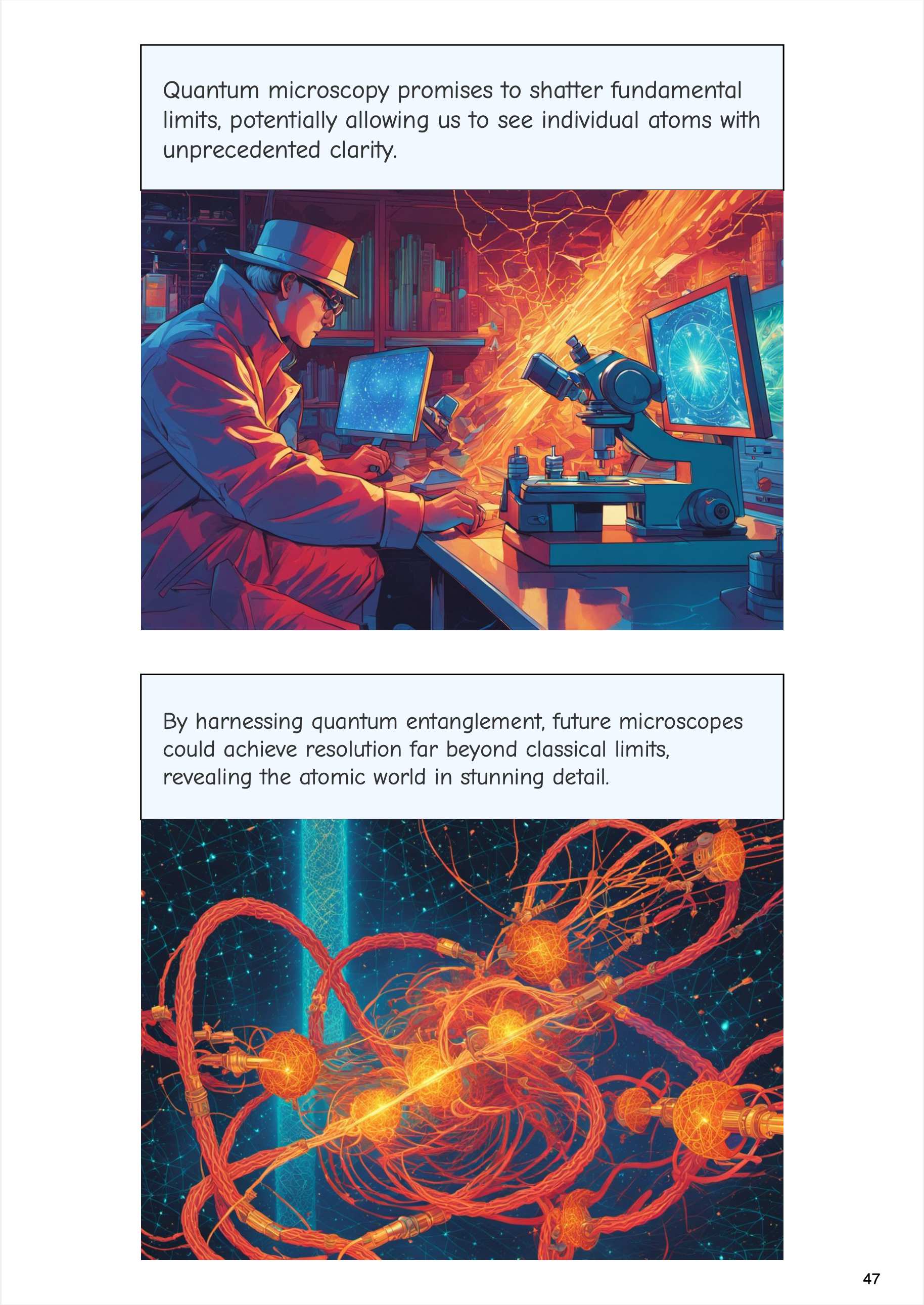
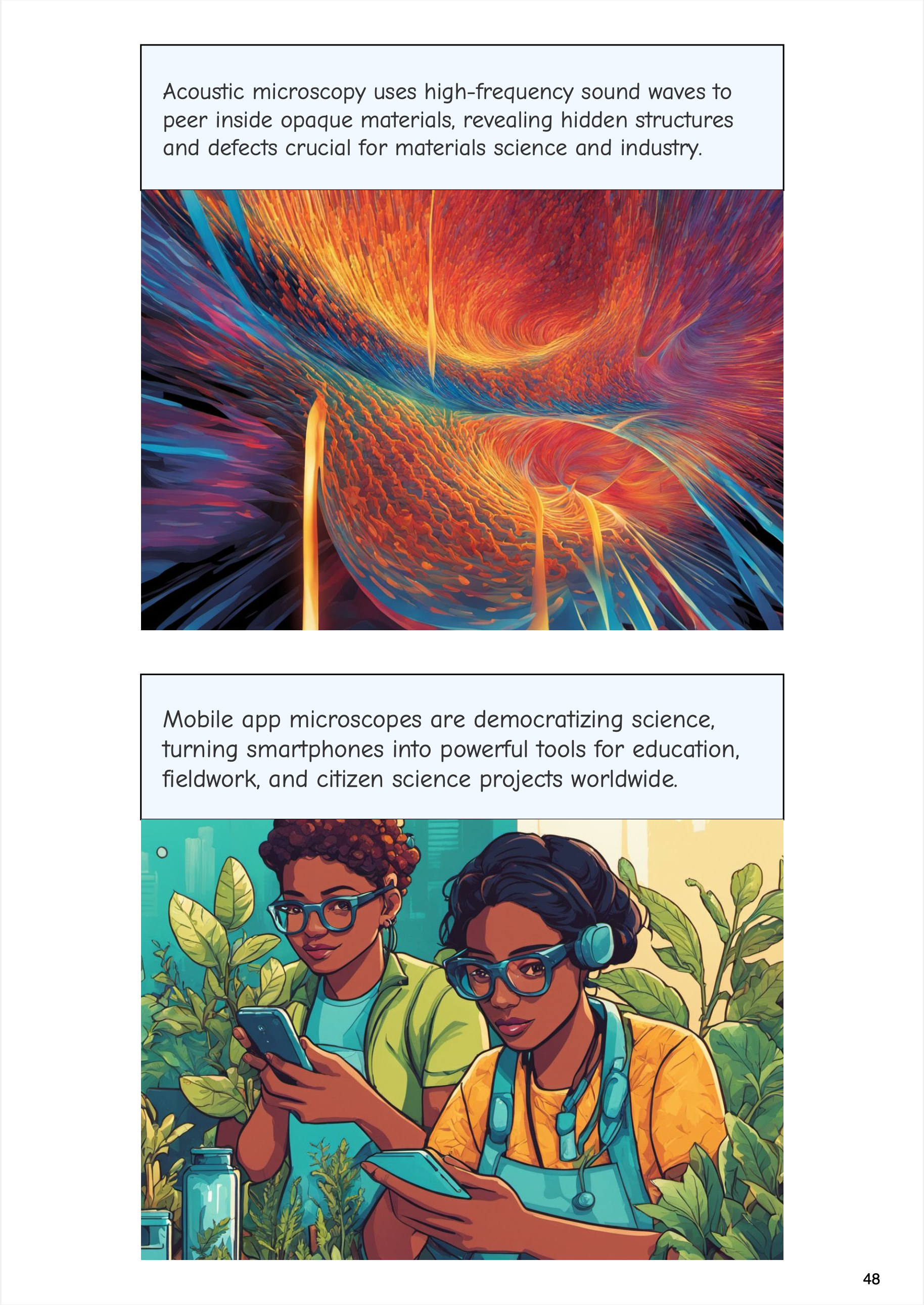
Both versions touch on cutting-edge developments and future possibilities in microscopy.
Positive Aspect: The guides connect current technology to potential future developments, showcasing the ongoing evolution of microscopy.
Who Benefits:
Aspiring scientists and engineers
Futurists and technology forecasters
Investors and entrepreneurs in scientific instrumentation
Educational Value and Accuracy
Comprehensive Coverage: Both guides offer a thorough exploration of microscopy, from basic principles to advanced techniques and future possibilities.
Visual Learning: The AI-generated images provide unique and engaging visualizations of microscopes and their findings, enhancing understanding through visual learning.
Interdisciplinary Connections: The guides effectively link microscopy to various scientific fields, providing a holistic view of its impact on science and technology.
Accuracy: While the general principles and historical developments are accurately represented, users should always cross-reference with peer-reviewed sources for the most up-to-date scientific information.
Who Can Benefit from These Visual Guides
The Microscope visual guides can be valuable resources for a wide range of individuals:
Students: From high school science students to graduate-level researchers, these guides offer visualizations and explanations that can supplement traditional textbooks and lectures.
Educators: Teachers and professors can use these guides as visual aids in their lessons, providing engaging illustrations of microscope types and techniques.
Researchers: Scientists in fields related to microscopy can find fresh perspectives and visual inspiration for their work and presentations.
Science Communicators: Journalists, writers, and documentary makers focusing on science and technology can use these guides to better understand and communicate about microscopy.
Industry Professionals: Those working in fields that rely on microscopy, such as materials science, nanotechnology, and biotechnology, can gain a broader understanding of different microscopy techniques.
Medical Professionals: Doctors, pathologists, and medical researchers can benefit from the sections on biological applications of microscopy.
Historians of Science: The historical sections provide valuable insights into the development of microscopy, useful for those studying the history of scientific instruments.
Artists and Designers: Those creating science-based art or technical illustrations can find unique visual interpretations of scientific concepts and instruments.
Hobbyists and Citizen Scientists: Amateur microscopists and science enthusiasts can deepen their understanding of the instruments they use and the broader field of microscopy.
Policy Makers and Funders: Those involved in science policy and research funding can gain insights into the importance and potential of microscopy across various scientific disciplines.
Conclusion
The Microscope visual guides demonstrate the power of AI-generated educational content to make complex scientific topics accessible and engaging. By combining clear explanations with unique visualizations, these guides offer valuable resources for a diverse audience, from students and educators to professionals and curious individuals.
While these guides should not replace traditional academic resources, they serve as excellent supplementary materials, offering fresh perspectives and visual aids that can enhance understanding of microscopy and its impact on science and technology. As AI technology continues to evolve, we can expect even more sophisticated and tailored educational resources that cater to a wide range of learning styles and needs.
You can get these visual guides here.
About me
I am a software/AI/product engineer/scientist conducting cutting-edge research in modern generative AI. Please consider buying my AI-generated visual guides at the store to support my work. It will also help me immensely if you spread the word, comment, like, and share my posts about haixu. Thank you!
Subscribe to my newsletter
Read articles from Anand (RC) directly inside your inbox. Subscribe to the newsletter, and don't miss out.
Written by

Anand (RC)
Anand (RC)
I am currently working on generative AI, currently text+image experiences, educational AI generated visual guides in various mediums (comic, video, etc.). Before that, I was building llm apps with chat models, evaluating GPTs and Assistants API. Before that worked in conversational AI. Prior to that, have worked on many things product, software, AI, ML.